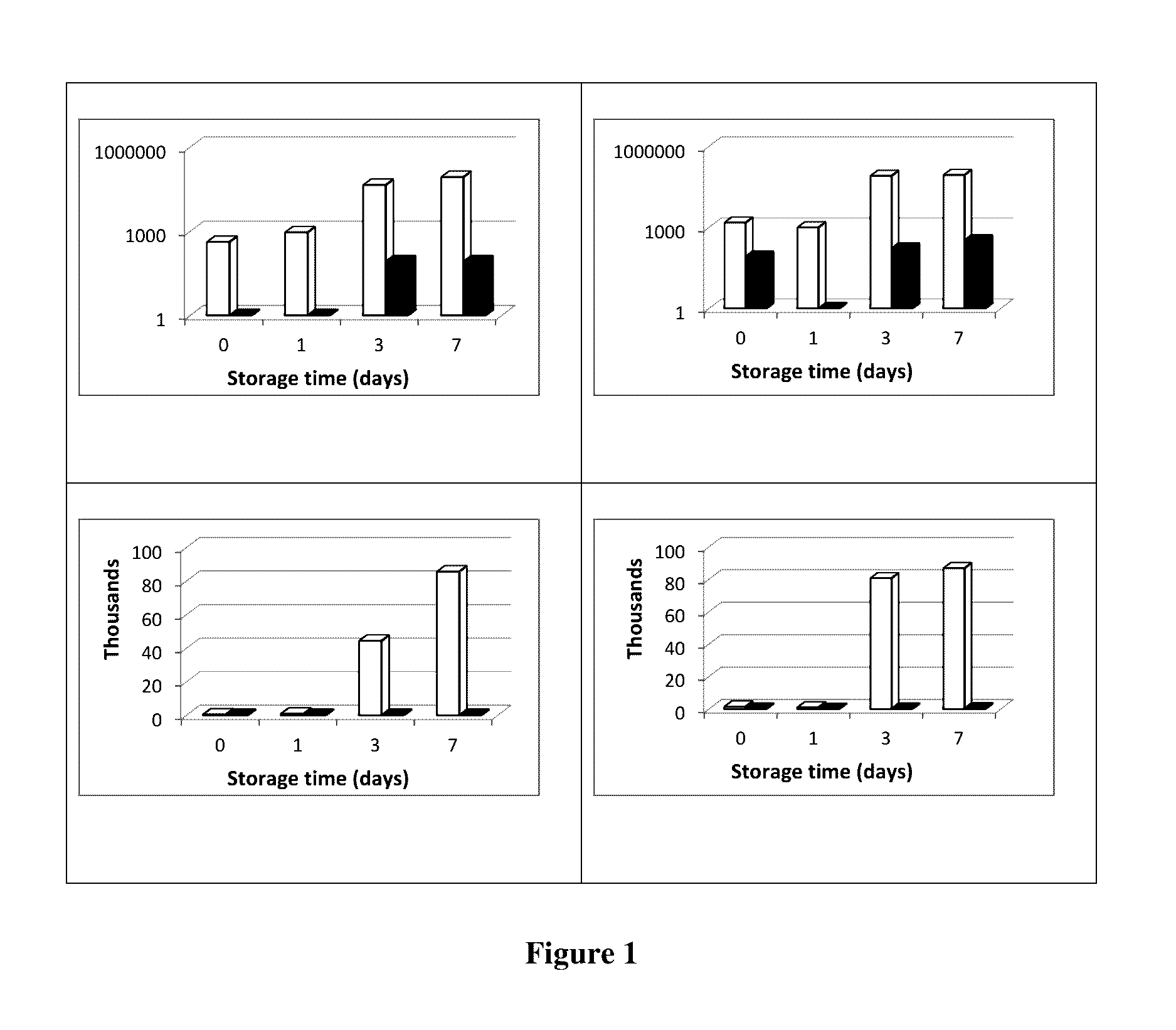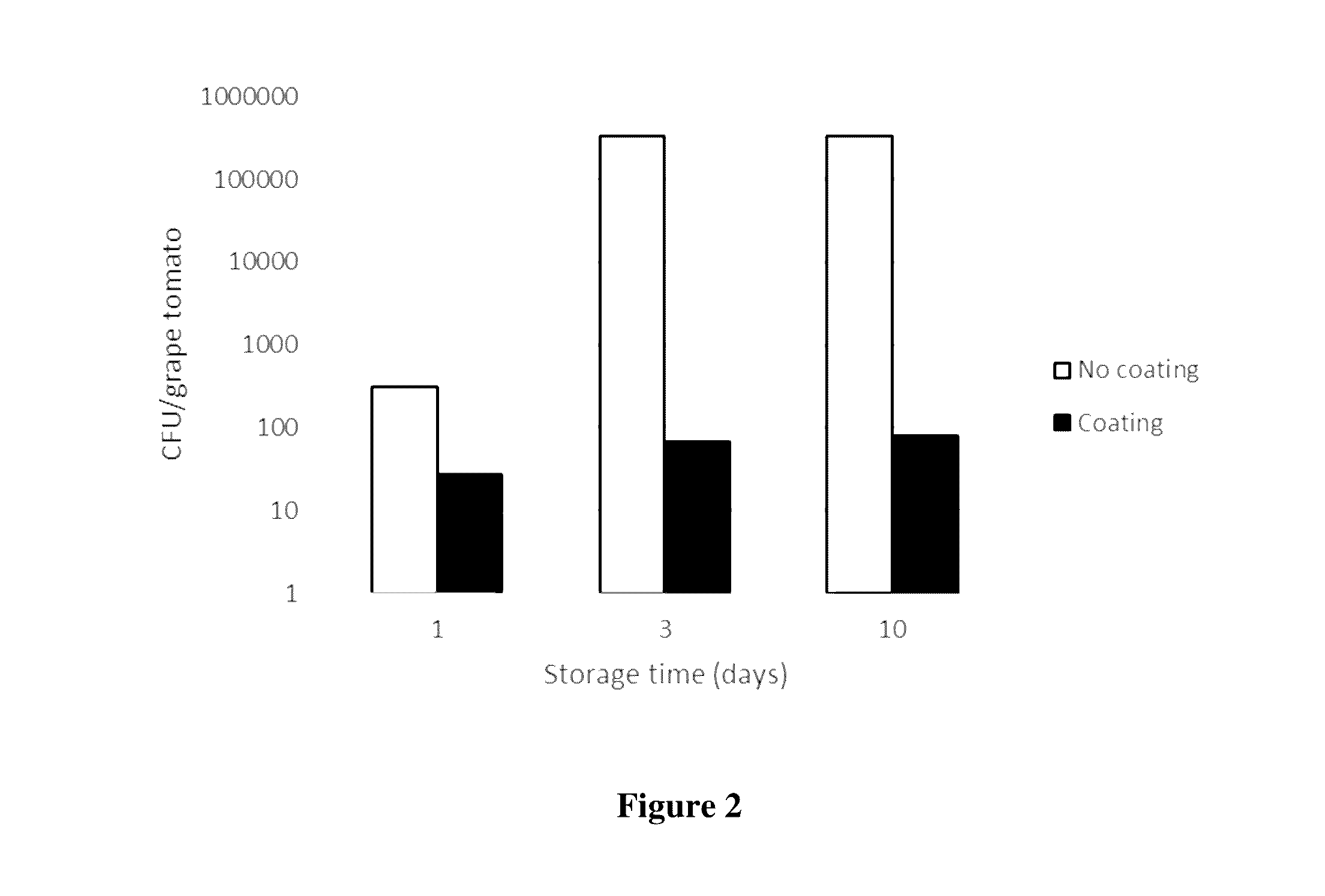Post-Harvest Coating for Fresh Produce
a fresh produce and post-harvest technology, applied in the field of post-harvest coating, can solve the problems of high food loss rate in the world, supermarkets lose $15 billion annually in unsold fruits and vegetables, and about a third of horticultural crops are lost forever
- Summary
- Abstract
- Description
- Claims
- Application Information
AI Technical Summary
Benefits of technology
Problems solved by technology
Method used
Image
Examples
experiment 1
Abstract
[0051]In a first experiment, the sodium acid sulfate was combined with a carbohydrate (cornstarch) to form a post-harvest coating material with the ability to adhere to the surface of fresh produce, where it reduced the presence and growth of microorganisms. Produce studied included grape tomatoes and cantaloupes. The coating material was effective in inhibiting microorganisms, including molds, yeasts, and bacteria, naturally occurring on fresh produce purchased at retail level; and pathogenic bacteria (Listeria monocytogenes and Salmonella spp.) on inoculated produce items. The obtained reduction in microorganisms ranges from 1-7 log units CFU / ml.
[0052]Hypothesis
[0053]It is possible to combine sodium acid sulfate with a carbohydrate to form a coating material with the ability to form a film on the surface of fresh produce.
[0054]A coating solution consisting of sodium acid sulfate and a carbohydrate can reduce the amount of microorganisms (both spoilage organisms and pathoge...
experiment 2
Summary
[0096]Several coating solutions were prepared using different emulsifying and stabilizing agents. Grape tomatoes were soaked and dried, and the various materials were evaluated in terms of their solubility in the coating solution, their adherence or stickiness to the tomato surface, the uniformity of the obtained coatings, and the antimicrobial properties of these coatings. Sucrose ester of fatty acids and Tween 20 gave best results.
[0097]Introduction
[0098]In one embodiment, the produce coating of the invention is made with a formulation that includes Dawn® dish soap (which contains sodium alcohol sulfates and sodium alcohol ethoxysulfates as surfactants). The purpose of this experiment is to find alternatives to the dish soap in the formulation by replacing it with other ingredients that are food-grade but show the same effect of overcoming the hydrophobicity of certain produce surfaces. For this purpose, grape tomatoes were treated with different coating solutions to compar...
experiment 3
[0141]Shelf Life / Quality
[0142]Additional experiments were done comparing cantaloupes and grape tomatoes that were coated with the post-harvest coating of the invention against those that were left uncoated (“control”). The produce was stored at ambient temperature. Cantaloupes were photographed after 1 day, 5 days, 7 days, and 9 days; and tomatoes were photographed after 1 day, 5 days, 7 days, 9 days, and 11 days. After 9 days, the coated cantaloupes had much better shelf life / quality than the uncoated ones. Also, after 11 days, the coated tomatoes had much better shelf life / quality than the uncoated ones.
[0143]Sensory
[0144]A sensory panel was not able to taste a difference in tartness, sweetness and off-flavors between coated and non-treated samples. Also, there was no difference in the overall acceptability between coated and non-treated samples. The results are shown graphically in FIG. 7 attached.
[0145]Inhibition Zones
[0146]Filter paper disks were treated with the coating and ap...
PUM
| Property | Measurement | Unit |
|---|---|---|
| particle sizes | aaaaa | aaaaa |
| diameter | aaaaa | aaaaa |
| diameter | aaaaa | aaaaa |
Abstract
Description
Claims
Application Information
 Login to View More
Login to View More - R&D
- Intellectual Property
- Life Sciences
- Materials
- Tech Scout
- Unparalleled Data Quality
- Higher Quality Content
- 60% Fewer Hallucinations
Browse by: Latest US Patents, China's latest patents, Technical Efficacy Thesaurus, Application Domain, Technology Topic, Popular Technical Reports.
© 2025 PatSnap. All rights reserved.Legal|Privacy policy|Modern Slavery Act Transparency Statement|Sitemap|About US| Contact US: help@patsnap.com



